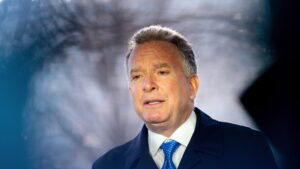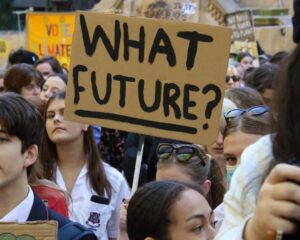
Queensland’s Deputy Premier, Jarrod Bleijie, announced in state parliament that the government will seek the repayment of $65 million from Fortescue Metals Group, led by billionaire Andrew “Twiggy” Forrest. This sum was allocated for a now-abandoned hydrogen energy project in Gladstone. During his address on Tuesday morning, Bleijie criticized the previous Labor government’s support for the project, labeling it a “vanity project.”
The state government had initially approved $92.5 million in taxpayer funding for the initiative, with $65.97 million already disbursed to Fortescue under what Bleijie described as a “terrible deal” made by the former administration. “On behalf of Queensland taxpayers, I’ve directed my department to advise Fortescue that the Crisafulli government will issue a notice to comply and a default notice and seek full reimbursement of the $65.97 million towards this now discontinued project,” Bleijie stated.
The Gladstone hydrogen project, which was initially projected to cost $140 million, received joint funding from both state and federal governments. It was announced in 2021 with significant fanfare from both Forrest and former Premier Annastacia Palaszczuk. However, in May 2023, Fortescue confirmed its decision to abandon both stages of the hydrogen project, which had been envisaged as a leading hub for sustainable energy technology in Australia and beyond.
In an additional blow, Fortescue also scrapped a major hydrogen project in the United States, influenced by changes in tax incentives under former President Donald Trump. Following this decision, Tim Ayers, the Federal Industry Minister, indicated that the Commonwealth would pursue the recovery of $49.44 million it had invested in the Gladstone initiative.
A spokesperson for Fortescue stated that the company would “return funds where required under the grant agreement.” Earlier this year, Forrest was featured on the cover of Time magazine, promoting his vision for green energy.
Hydrogen has emerged as a key component in the global effort to decarbonize economies, offering a clean fuel alternative that emits only water when burned. The production of “green” hydrogen involves using renewable energy sources to split water molecules through electrolysis, a process that generates hydrogen gas without emissions. Despite its commitment to green hydrogen, Fortescue has recently faced obstacles that have led to a reassessment of its ambitious plans, citing the high costs and substantial renewable energy requirements.
In its latest annual report, the company noted a comprehensive review of its global green energy pipeline, aiming to adjust to shifting market conditions, policy landscapes, and project economics. “Our ambition remains to lead in green hydrogen and green metals, while maintaining discipline in capital allocation,” the report stated.
Other major players in the energy sector have also reevaluated their projects. For instance, Woodside Energy, Australia’s largest oil and gas company, has withdrawn from a planned liquid hydrogen project in Oklahoma.
As Queensland moves forward with its efforts to reclaim taxpayer funds, the outcome of this situation may have broader implications for the state’s investment strategies in emerging energy technologies.






